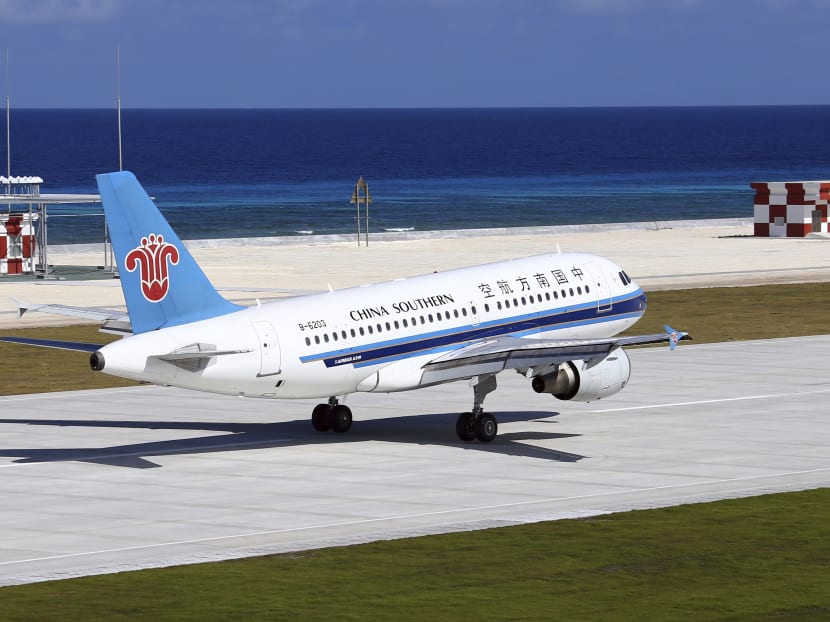China’s carriers set for biggest profit since 2010 as they bypass Singapore and Hong Kong
SHANGHAI — Mr Morton Shen, a manager at a Shanghai-based company, no longer needs to spend more than 17 hours to fly to Madrid after a layover in Amsterdam. A Chinese airline now can whisk him direct to Spain’s capital in about 13 hours for a cheaper fare.

AP file photo
SHANGHAI — Mr Morton Shen, a manager at a Shanghai-based company, no longer needs to spend more than 17 hours to fly to Madrid after a layover in Amsterdam. A Chinese airline now can whisk him direct to Spain’s capital in about 13 hours for a cheaper fare.
“Most travellers would prefer the direct flight as transfers waste too much time,” said Mr Shen, 29.
Air China Ltd, China Eastern Airlines Corp and China Southern Airlines Co, the nation’s “big three,” are increasingly ferrying passengers from the mainland to Europe and the US without hopping over in Hong Kong or Singapore. Hundreds of billions of dollars of new aircraft in the past decade have helped the state-owned airlines expand in a market where some 488 million people - or the combined populations of the US, Germany and the U.K. - take to the skies every year.
“Chinese travellers prefer to fly with Chinese airlines and hence, as the Chinese travel more, their airlines benefit,” said Steve Saxon, a Shanghai-based partner at McKinsey & Co. “Beijing, Shanghai and Guangzhou are all becoming powerful hubs as well, being able to draw traffic from China to Europe and U.S., increasingly competing with Tokyo, Seoul and Hong Kong.”
On Thursday (March 30), the carriers will report earnings for 2016 that may validate their strategy of capacity expansion, new routes and cheaper fares.They may report a combined profit of about 19.5 billion yuan (S$3.95 billion) for 2016, their best since 2010, according to estimates compiled by Bloomberg. Analysts say only currency swings and fuel price volatility have damped their earnings growth.
A market that grew almost 11 per cent last year - three times the clip in the US - means China’s carriers are in a sweet spot their premium rivals in the region can only envy. Demand for seats has by and large kept pace with capacity addition.
Among rivals bearing the brunt of that expansion is Cathay Pacific Airways Ltd, the marquee airline that owns about 18 per cent of flag carrier Air China. The Hong Kong carrier just embarked on a three-year corporate transformation program, which entails job cuts and management changes, after reporting its first loss in eight years.
Newer destinations out of China include Las Vegas, Brisbane, San Jose and Adelaide as the three airlines take advantage of their state-ownership to corner a majority of the air rights apportioned by regulators. Though local rivals such as Hainan Airlines Co, controlled by billionaire Chen Feng’s HNA Group, are trying to secure a footing, the top three together command 80 per cent of the international market.
MOST AGGRESSIVE
Hainan, whose capacity expansion has been the most aggressive among the Chinese operators, reported Tuesday that its profit in 2016 rose 4.5 per cent to 3.14 billion yuan, while sales jumped almost 16 per cent.
Air China may say net income rose 10 per cent to 7.76 billion yuan in the year, while China Eastern may report a 33 per cent gain to 6 billion yuan, according to the average forecast of at least eight analysts in the survey. China Southern is set for a 53 per cent jump to 5.7 billion yuan.
“If you manage to get more people on the aircraft, then it will definitely help with your earnings,” said Geoffrey Cheng, a Hong Kong-based analyst at Bocom International Holdings Co. “These carriers reported better load factor last year.”
The yuan’s 3.9 per cent decline against the dollar in the fourth quarter, the most since 1994, may have resulted in some currency-conversion losses, trimming the annual profits, according to Cheng. For every 1 per cent rise in the greenback against the yuan, the carriers stand to lose as much as 700 million yuan, he said.
The expansion is a worthy investment as demand for outbound travel remains strong, said Saxon at McKinsey. China has been the world’s largest source of outbound tourists, with over 120 million Chinese venturing abroad in 2016.
Global operators have been wanting a share of the pie as well. American Airlines Group Inc., the world’s largest carrier, agreed to invest US$200 million in China Southern this week in a deal that involves code sharing. The pact follows a similar accord in 2015, when Delta Air Lines Inc announced a US$450 million investment in China Eastern. BLOOMBERG





